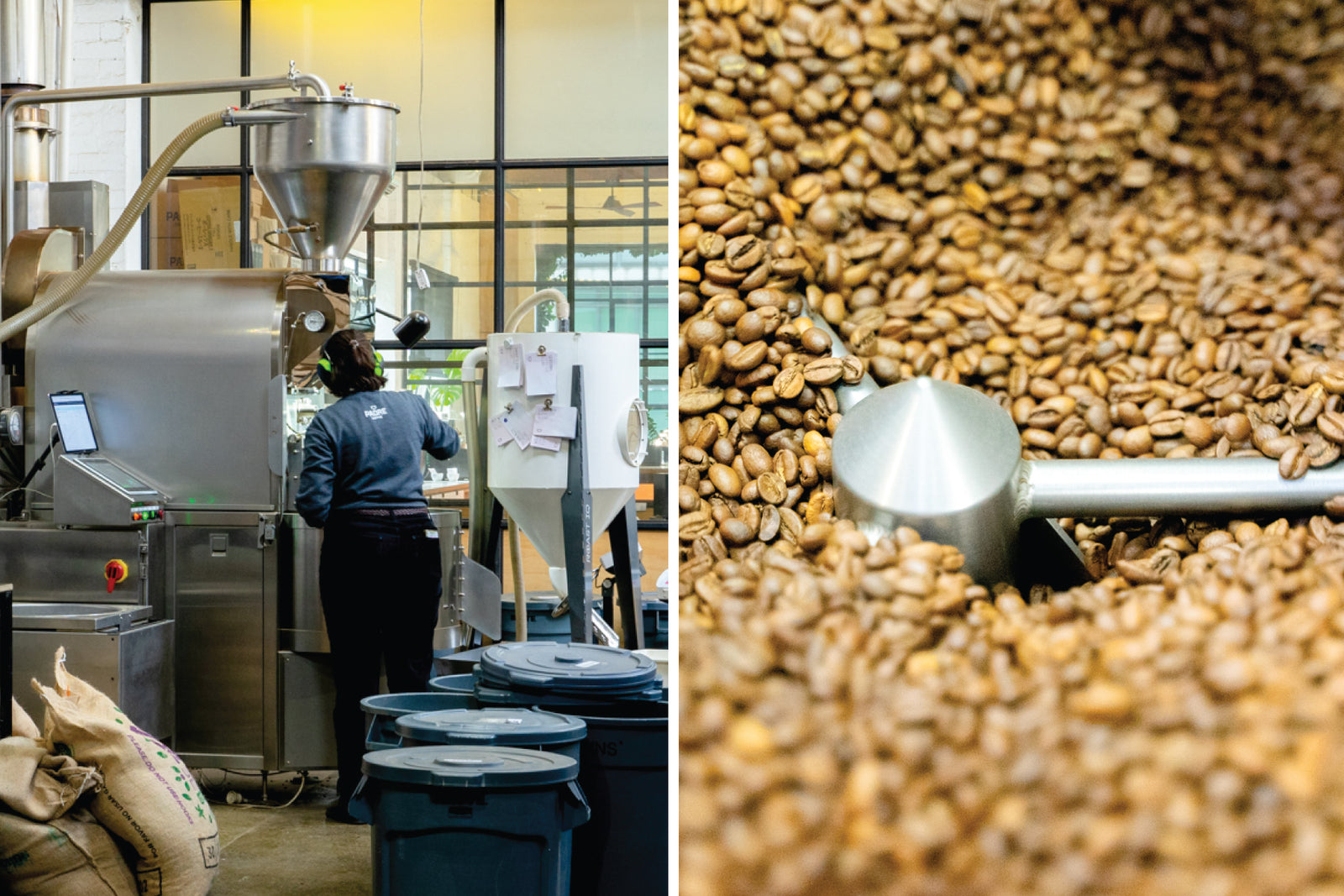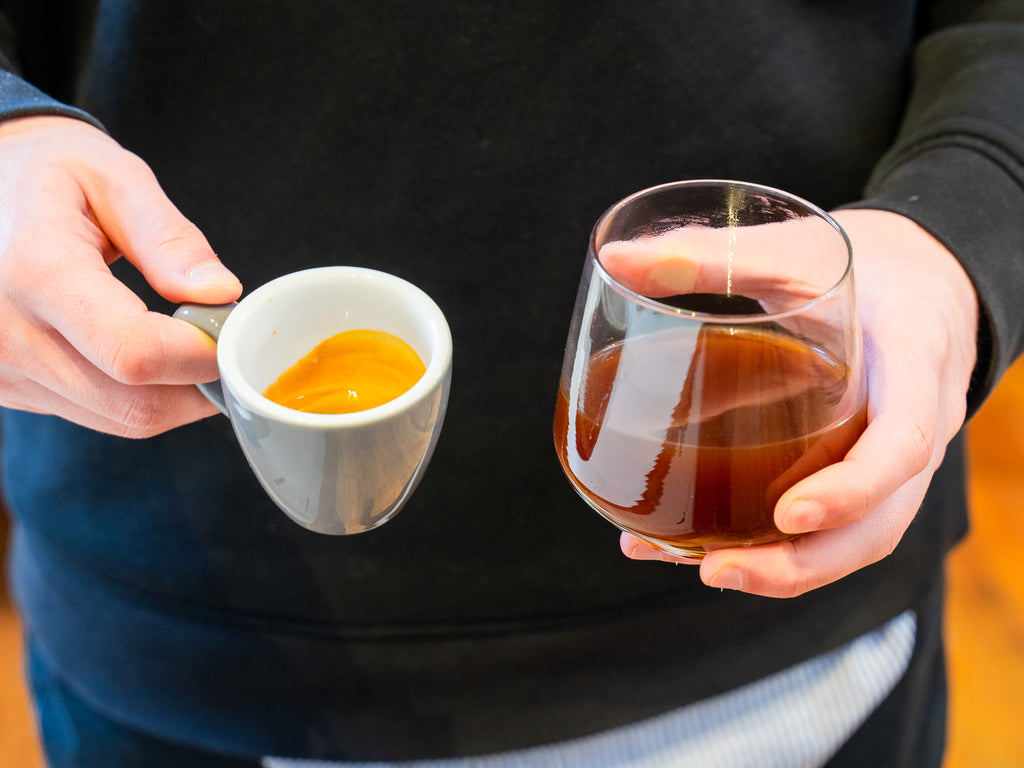BFCM is live — 20% off coffee & 10% off everything else. Discounts auto-applied.


The evolution of coffee roasting is one of the most fascinating aspects of coffee’s history. The first consistent method for roasting involved toasting coffee on perforated pans. Now, there are a range of technologies from domestic roasters to large scale industrial ones.
The process of roasting coffee is paramount to finding the desired flavour profile of coffee, taking it from the vegetal taste of green coffee seeds and turning it into intoxicatingly aromatic coffee beans.

In the last century, there has been a massive amount of investment into the research of roasting coffee at a commercial scale. The specialty coffee movement is focused on sourcing quality coffee and representing the intended flavour profile as accurately as possible.
There are many variables to consider when roasting coffee to suit a specific brew method - like espresso or filter. This is what we know as “espresso roast” or “filter roast”. A coffee’s roast profile is made up of several key stages and the speed at which a particular coffee passes through each of the stages.
As any chef will know, cooking a piece of meat is all about controlling the temperature of the flame and how long it’s exposed to it for. It’s exactly the same with coffee roasting. The use of temperature and time is pivotal in manipulating the profile and physical make-up of the coffee. Roasting is controlled to determine the acidity, sweetness and bitterness of a coffee.

To begin, the raw coffee beans are fed into the roaster that has been charged at an initial temperature. It’s then up to the roaster to decide how hot to keep the temperature and how long the beans will roast for. This is often referred to as a “roasting style” because, like with clothes, everyone is going to do it a little differently depending on their taste. Many coffee roasters track their roast profiles carefully so they can replicate them to within very tight boundaries of temperature and time.

At Padre Coffee we believe in roasting coffee beans in a way that expresses the best of what each origin has to offer. Our goal is to highlight the unique flavour characteristics that producers create through their agricultural practices.
We achieve this by developing a thorough understanding of how different regions grow and process their crops, assessing the physical makeup of the coffee seed itself, and of course the roasting technique required to achieve desirable characteristics in the final cup.
In this blog, we compare filter, espresso, and omni roast types and how the taste differs depending on the roasting process.

FILTER
Filter coffee is typically roasted for a short period of time at a lower temperature which retains acidity and results in a lighter bean colour. The sweetness is also more prominent since the sugars in the bean do not have as much time to caramalise.
Filter roasted coffee is ideal for manual brewing methods such as pour over which uses products like the Chemex, Mochamaster or v60. As filter coffee is typically brewed for extended periods of time, the coffee can be roasted slightly lighter to accomodate for the longer contact time in order to extract the desired flavour.

ESPRESSO
With slight adjustments in the roasting process, coffee can taste significantly different. Roasting for a longer period of time at a higher temperature can increase body and decrease acidity.
Espresso beans develop a darker colour and become more brittle than filter roast which means they are more soluble. This solubility is ideal for espresso machines to extract the coffee’s full flavour properly.
Espresso roasts result in a sweet and balanced cup of coffee.

OMNI
Traditionally, it has been accepted that coffee roasts are developed specifically for a particular brewing method. However, knowledge accrued by specialty coffee roasters around the world has taught us that the roast type is not the be-all and end-all of the coffee’s final flavour.
Roasters and baristas are now sharing the responsibility for a coffee’s profile with omni-roasting. This roasting process develops a versatile coffee that can be used for a range of brewing methods.
For example, with omni-roasting, coffee lovers can enjoy espresso even if it’s brewed from a light roast.
Padre Coffee acknowledges the Traditional Custodians of Country throughout Australia and their continued connections to land, sea and community.
We pay our respect to Elders past, present and future, and extend that respect to all Aboriginal and Torres Strait Islander Peoples.